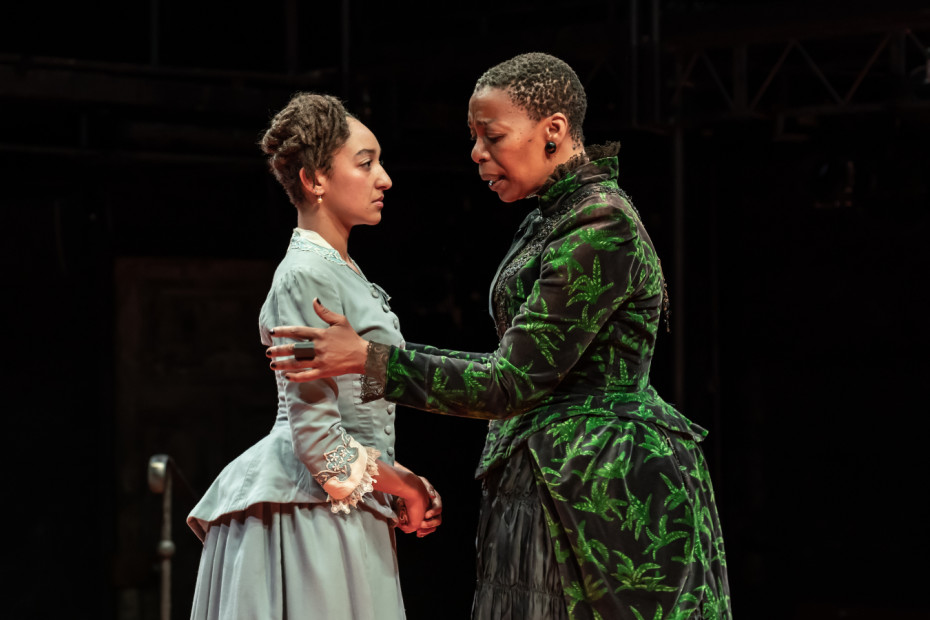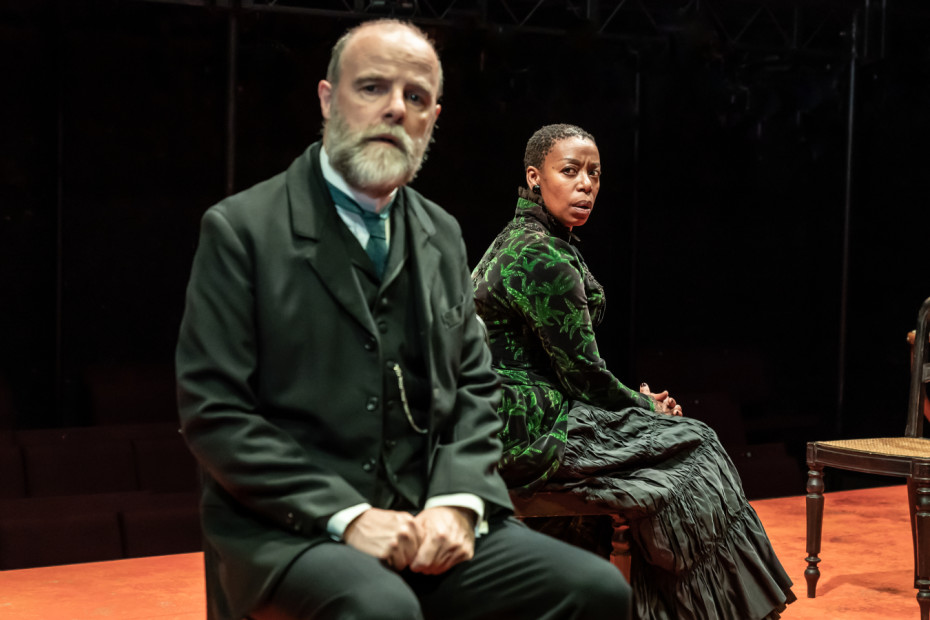Fifteen years after she walks out on her family at the end of Ibsen’s 1879 play, A Doll’s House Part 2 imagines what would happen when Nora comes back home. With an incredibly cast of four – including theatre royalty and Olivier Award-winning Noma Dumezweni as Nora and Patricia Allison (Sex Education) as her grown up daughter Emmy.

A Doll’s House, heralded for being a feminist text of its time, stood out for showing what happens when a wife and mother acts in her own interests and not just for the needs of others. Nora has everything a woman of the time should want; a comfortable home life, a husband, children and a nice house. Yet she is miserable, and tired of feeling like a doll kept by her husband, Torvald. In the iconic final scene, she walks out on her husband and children, in a dramatic ending that left us applauding her bravery, and wondering what would happen to her next…

An enormous house sits in the middle of the Donmar Warehouse, its roof obscuring the stage. As the play starts, the roof lifts up, as the roof of a dolls house might reveal what’s inside.

A knock at the door announces Noma Dumezweni’s Nora, in a glamorous, high-fashion, green velvet dress. Dumezweni is incredible to watch, and she brings a huge amount of pride, poise and utter class to the role. This is peppered with glimmers of incredible emotion – her reaction when she sees Anne Marie (June Watson) again had me welling up. She has a lot to be proud of; Nora has found great success since she left. Her professional endeavours have brought her wealth and she has lead a fun and fulfilling life.
Now she returns to the house in urgent need of something from Torvald. She must face the family she left and reckon with her past, including her grown-up daughter. Brían F. O’Byrne is a sympathetic yet stubborn Torvald, and it’s heart-wrenching to hear about his experiences after Nora left. We see the impact this has all had on Emmy, and the decisions she is now making for herself.

The show feels incredibly relevant even now. The ways in which we all, particularly women, make choices about our lives that we think will please others or accord to some social norm. To what extend is marriage beneficial for us, and is it something we still need to do to profess our love for somebody? The play asks whether we are made to be loyal to one person, and whether we are just setting ourselves up for failure. It’s set in a time when woman couldn’t divorce, and when unmarried women couldn’t do business or have their own money. It’s still relevant now, when we are still having conversations about fault-based divorce.


The themes in A Doll’s House are still incredibly powerful. In modern culture we’re quite used to seeing men walk out on their families and neglecting their roles as fathers. I think we still hold women to a higher standard of parenting and are more shocked when we see a woman leave her children. It made me think of Maggie Gyllenhaal’s The Lost Daughter, starring Olivia Colman and Jessie Buckley, which deals with similar issues.
Overall, this is a powerful play with an incredibly talented cast, that imagines a story beyond a much-loved play. I’d also add that although it might help give some context, seeing part 1 isn’t necessary to enjoy part 2.